Since 1976, kambuzi (small haplochromine cichlids) have increased in importance from about 4% of the total catch to the present level of almost 90% (Table 10.1). By 1986, the number of fishing craft had doubled, and since then it has remained constant, while there have been large changes in the proportions of gears employed.
Kambuzi are exploited by kambuzi beach seines and offshore nkacha nets (see chapter 5). Most kambuzi seines presently in use are long nets which make a small number of pulls, and have a high CPUE. Nkacha nets are short, with low CPUE, and make frequent pulls. These gears were not distinguished in CAS estimates or in frame surveys prior to 1990, and no data on gear headline length is available. It seems that the number of nkacha nets has grown more rapidly than that of kambuzi seines. However, many chambo seines have been converted into long kambuzi seines and it is likely that most kambuzi seines were previously short nets, like those in use in the northern part of the south-east arm of Lake Malawi. This means that it is not known whether the unit of effort (seine pulls) has remained comparable from 1976 to 1991, and any stock assessment for kambuzi which is based on these data must be treated with caution.
Table 10.1 Trends in the fisheries of Lake Malombe
| Year | Percentage of catch | Total catch | Fishing craft | Numbers of gear | ||||
| Chambo | Kambuzi | Other spp. | t | Gillnet | Chambo seine | Nkacha/ Kambuzi seines | ||
| 1976 | 90 | 4 | 6 | 4,900 | 311 | 450 | 25 | 30 |
| 1977 | 89 | 6 | 5 | 5,500 | 309 | 450 | 25 | 30 |
| 1978 | 85 | 9 | 5 | 4,900 | 225 | 449 | 22 | 32 |
| 1979 | 86 | 10 | 5 | 4,900 | 262 | 386 | 25 | 45 |
| 1980 | 85 | 12 | 3 | 5,400 | 299 | 322 | 25 | 59 |
| 1981 | 80 | 18 | 2 | 8,900 | 359 | 259 | 27 | 72 |
| 1982 | 75 | 23 | 2 | 10,400 | 373 | 231 | 24 | 96 |
| 1983 | 73 | 25 | 2 | 11,100 | 386 | 203 | 20 | 121 |
| 1984 | 70 | 27 | 3 | 9,500 | 422 | 186 | 20 | 145 |
| 1985 | 58 | 38 | 4 | 10,400 | 550 | 169 | 15 | 202 |
| 1986 | 37 | 59 | 4 | 11,100 | 643 | 137 | 18 | 224 |
| 1987 | 26 | 70 | 4 | 11,900 | 619 | 128 | 15 | 229 |
| 1988 | 20 | 76 | 5 | 9,800 | 594 | 119 | 11 | 234 |
| 1989 | 15 | 81 | 4 | 9,700 | 642 | 113 | 15 | 245 |
| 1990 | 10 | 83 | 7 | 9,100 | 566 | 110 | 6 | 242 |
| 1991 | 6 | 87 | 7 | 10,300 | 620 | 101 | 2 | 303 |
Notes: catches are three-year running means of CAS data, numbers of craft & gear are extrapolated from frame surveys. Gillnets given as number of 400m units (average size in 1991).
Before attempting to assess the kambuzi fishery, it is instructive consider the biological basis of the fishery (Table 10.2).
Analysis of kambuzi and nkacha seine catches from Lake Malombe indicates that around 40 fish species are exploited by these gears. However, more than 75% of the catch, by weight, is made up of three species (Table 10.2). The taxonomic status of these species is unclear: two or possibly all three seem to be undescribed. These three species are the smallest cichlids in the lake, maturing at 5.5 to 6.5 cm. Several of the other major species are also in the smallest size class.
In comparison to the catches of small-meshed seines in Lake Malawi, the catches in Lake Malombe consist of fewer, generally smaller species. Although no previous biological studies have been carried out in the lake to provide a baseline for comparison, it would seem that, like the chambo, populations of the larger haplochromines have also declined as a result of heavy fishing pressure, and that the fish community is now dominated by the smallest species found in the lake. Thus, overexploitation of these species cannot be compensated by an increase in the populations of smaller fishes.
Figure 10.1 The maximum sustainable yield of the kambuzi fishery in Lake Malombe is estimated to be around 7,500 tonnes, at an effort level equivalent to around 200 seine nets (Schaefer model).

Figure 10.2 Kambuzi seines of 13mm mesh, or smaller, catch a lot of small immature kambuzi. Nkacha nets catch fewer small fish. A 20mm mesh selects for adults of the smaller kambuzi species which dominate the catches.
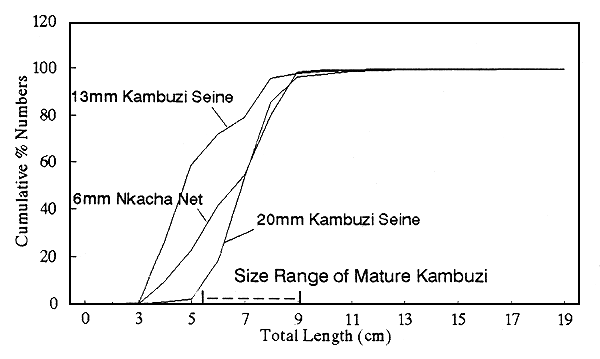
Table 10.2 Species caught by kambuzi/nkacha seines in Lake Malombe
| Rank | Species | Estimated catch (t) | Number of fish examined | Mean weight at capture (g) | Size class |
| 1 | Lethrinops 'pink head' | 2560 | 3488 | 4 | * |
| 2 | Copadichromis cf. virginalis | 1595 | 764 | 5 | * |
| 3 | Otopharynx 'argyrosoma red' | 1135 | 1564 | 4 | * |
| 4 | Otopharynx tetrastigma | 375 | 315 | 7 | * |
| 5 | Oreochromis shiranus | 205 | 13 | 57 | *** |
| 6 | Copadichromis of chrysonotus | 154 | 82 | 8 | * |
| 7 | Clarias gariepinus | 142 | 5 | 159 | **** |
| 8 | Placidochromis longimanus | 139 | 62 | 12 | ** |
| 9 | Engraulicypris sardella | 81 | 161 | 3 | * |
| 10 | Rhamphochromis spp. | 76 | 29 | 11 | *** |
| 11 | Otopharynx of tetraspilus | 69 | 5 | 54 | ** |
| 12 | Protomelas similis | 65 | 39 | 9 | ** |
| 13 | Lethrinops lethrinus | 61 | 40 | 9 | *** |
| 14 | Lethrinops macrochir | 58 | 76 | 7 | ** |
| 15 | Ctenopharynx intermedius | 56 | 19 | 16 | *** |
| 16 | Opsaridium microcephalus | 33 | 22 | 7 | *** |
| 17 | Tilapia rendalli | 32 | 2 | 94 | *** |
| 18 | Oreochromis spp. (chambo) | 28 | 24 | 8 | **** |
| 19 | Placidochromis subocularis | 28 | 53 | 3 | ** |
| 20 | Buccochromis nototaenia | 25 | 26 | 5 | **** |
| Others (20spp) | 342 | 140 | - | - |
Note: Size classes are approximate average adult weights- * up to 25g;
** 25–100g;
*** 100–500g;
**** over 500g.
Using three-year running means of CAS catch and effort data, surplus production models gave highly significant fits to the data (Table 10.3).
Despite the better fit of the Fox models, we believe that at high effort levels they give unrealistically optimistic predictions for African Cichlid stocks. This is because the fish have low fecundities, and thus recruitment is likely to be strongly related to the adult stock size, leading to rapid collapse at a high fishing effort (of course, neither model explicitly accounts for recruitment overfishing). However, as the Fox models better describe the behaviour of the stocks at past effort levels, we have chosen the Schaefer model (ii) for further analysis, since it gives similar MSY and Fmsy predictions (see Figure 10.1). Since there are presently 303 small-meshed seine nets operating on the lake, all models suggest that the kambuzi stock is presently overexploited.
Table 10.3 Surplus production models of Lake Malombe kambuzi fishery.
| Schaefer | Fox | |||
| (i) | (ii) | (iii) | (iv) | |
| 1991 estimate from: | MTF | CAS | MTF | CAS |
| MSY (t) | 8,300 | 7,600 | 7,300 | 7,300 |
| Fmsy (pulls ×1000) | 323 | 370 | 390 | 381 |
| Fmsy (nets) | 176 | 200 | 207 | 237 |
| r (14 df) | 0.83 | 0.81 | 0.92 | 0.92 |
| Significance | P > 0.001 | |||
Note: all catch and effort data from 1976–90 from CAS, 1991 data either from MTF or CAS. Fmsy in nets was calculated by dividing Fmsy in pulls by mean number of pulls per net from 1986–1991
Despite the small size at maturity of the major kambuzi species, the majority of individuals caught by beach seines of up to 13mm mesh are immature. Nkacha nets operating further from the shore catch fewer small fish, even when employing smaller meshes (Figure 10.2). A mesh size of 25mm or greater would allow most immature kambuzi to escape. The banning of nets with a mesh size smaller than 25mm would allow the population of larger, mature fish to build up and, eventually, catches to increase.
Although the surplus yield models suggest that the fishery is overexploited, an increase in mesh size might permit present levels of fishing to be sustained, without causing a decline in kambuzi stocks. However, beach seining catches more immature fish than open-water seining, and regulations can be easily circumvented by attaching a lining of mosquito netting to the bunt of the seine net, or by using a small net, even a domestic mosquito net, as a ‘chalira’ to catch fish escaping as the net is landed. In addition, beach seines destroy weed beds which are important refuges for small fry. Thus, the fishery is likely to be more stable if based on offshore rather than beach seines.
Unchecked expansion of the fishery is likely to lead to a collapse of the stocks in the near future. This would severely reduce the fish production. At present the knowledge of the biology of these fishes is insufficient to enable more definite predictions to be made. As three, easily distinguishable species dominate the catches, this information should not be too difficult to collect, if a year-round programme of catch sampling were instituted.
Based on the estimated relationship between catch and effort for the kambuzi fishery (Tab. 10.3), an economic model is given, showing the relationship between the total earnings (catch value), the total costs and profit of the fishery, the mean annual profit per fisherman-entrepreneur and the annual wages for the individual crew member. For the model, the kambuzi seine and nkacha net fisheries are combined. The value of the catch is based on a mean beach price of MK 0.60. For the catch-related variable costs a fixed sharing system of 2:1 between owner and crew is assumed. The more effort-related “miscellaneous” costs are taken from studies on costs and earnings of fishing operations. Annual costs for net maintenance are fixed at MK 1,000 per net. The activity level is assumed to be constant for all effort levels.
It is predicted that the maximum profit for the whole fishery is reached at an effort level of 180 nets (Figure 10.3). Any additional net contributes more to the total costs than to the total earnings. The maximum sustainable yield (MSY) of the fishery is reached at an effort level of 195 nets. However, the fishery remains profitable until the effort reaches 350 nets, but the annual profit per owner drops down to MK 300. At this stage the crew wages become the limiting factor. The fisherman can choose between either closing his business or increasing the crew share, which would further reduce his profit.
Figure 10.3 Bio-economic model for the kambuzi fishery in Lake Malombe. Note: Total costs do not increase proportionally to total effort, as the crew-share depends on the catch.
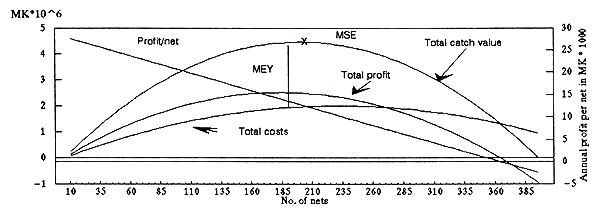
The chambo catch has declined since 1981, (Table 10.4, Figure 10.4), and particularly since 1985. At present, catches are less than 10% of what they were in 1980–85. There was a statistically significant correlation between catch and effort for the years 1976–85, giving an MSY value of about 6,000 tonnes a year (Figure 10.5). Effort in this case remained stable from 1984 until 1989 at levels required to obtain the MSY, or even somewhat below. Nevertheless a sharp decline in catch occurred. Effort decreased further in 1990 and 1991 but neither catches nor CPUE improved. This is a classic case of recruitment overfishing caused by excessive fishing of the parent stock, or a massive mortality, through fishing or habitat destruction, among the juvenile chambo (kasawala).
The first possibility can be ruled out as effort levels exploiting the parent stock were low compared to the years from 1976 to 1983, when catches levels were maintained. In Table 10.5 a breakdown of the chambo catches in numbers caught by each gear is given. Large catches of year 0 and year 1 juveniles are made by the kambuzi and nkacha seines. These seines together were responsible for nearly 70% of the total number of chambo caught by all gears in the year sampled (1990/91).
Table 10.4 Lake Malombe. Total catch of chambo in tons (all gears), chambo catch per unit of gillnet effort in Kg/set, total standardized effort in gillnet sets and kambuzi/Nkacha seine effort in pulls.
| Year | Chambo Catch(t) | C/E Kg/set | St. Gillnet Effort X1000 | Kambuzi/Nkacha Seine effort ×1000 |
| 1976 | 4134 | 8.2 | 504 | 14 |
| 1977 | 3943 | 6.0 | 657 | 15 |
| 1978 | 3800 | 6.9 | 551 | 16 |
| 1979 | 3795 | 8.9 | 426 | 20 |
| 1980 | 4502 | 15.7 | 287 | 24 |
| 1981 | 7726 | 19.8 | 393 | 35 |
| 1982 | 7374 | 15.6 | 473 | 57 |
| 1983 | 7055 | 15.2 | 464 | 70 |
| 1984 | 6781 | 25.6 | 265 | 67 |
| 1985 | 5859 | 19.2 | 305 | 151 |
| 1986 | 3869 | 13.2 | 293 | 349 |
| 1987 | 2528 | 10.5 | 241 | 487 |
| 1988 | 1636 | 5.3 | 309 | 467 |
| 1989 | 1387 | 4.4 | 315 | 418 |
| 1990 | 683 | 4.3 | 159 | 445 |
| 1991 | 441 | 5.1 | 87 | 580 |
Note 1: Effort of main contributing gear (i.e. gillnets and chambo seines) have been adjusted by the 3-year running average method, which affects the estimate of the total catch of chambo, but not the C/E. Note 2: Effort adjusted by the 3-year running average method. Separate statistics for the gears are not available.
Table 10.5 Lake Malombe. Chambo catches in numbers (× 1000) by gear (1990/91)
| Age | Size range (cm) | Gillnet | Chambo seine | K | N | Total |
| 0 | 3–12 | 1 | - | 929 | 1252 | 2182 |
| 1 | 12–20 | 43 | 12 | 132 | 191 | 378 |
| 2 | 20–26 | 594 | 89 | 13 | 11 | 707 |
| 3 | 26–30 | 246 | 34 | 10 | 4 | 294 |
| 4 | 30–33 | 109 | 13 | 10 | 8 | 140 |
| 5 | 34–36 | 14 | 4 | 5 | 3 | 26 |
| 6 | 36–38 | 1 | 1 | 1 | - | 3 |
| 6+ | 38-over | 1 | 1 | - | - | 2 |
| Total(%) | 1009(27) | 154(4) | 1100(30) | 1469(39) | 3732(100) |
Figure 10.4 Lake Malombe. The number of pulls made by the kambuzi/nkacha seines in years N plus N+1 and the chambo catch made by all gears in year N+2 are negatively correlated, (correlation coefficient r = -0.95, highly significant), because these seines capture large numbers of chambo juveniles.

Figure 10.5 Lake Malombe. All gears. Relationship between chambo catch and effort for 1976–85. Data for 1986–90 do not fit the older pattern. (Schaefer: gillnet CPUE (76–85) = 32.74 - 0.043 effort, r = -0.83, MSY = 6220, fmsy = 380. Fox: elog gillnet CPUE (76–85) = 4.014 - 3.405×10-6 effort, r = -0.85, MSY = 5980, fmsy =295).

The evidence for the increasing pressure from the seines throughout the 1980s is clearly demonstrated in Figure 10.4. In 1981 there were 72 kambuzi and nkacha seines, in 1991 there were 303. In addition many of the kambuzi seines are illegal, 63% exceeding the legal head-line length set for these fine meshed seines. Kambuzi beach seines in particular are thought to harm chambo during breeding and brooding periods, as these seines are dragged through the habitat utilised by chambo and destroy nests and under-water vegetation. Nkacha seines work in shallow open waters, where kasawala are found in large numbers. It is evident that more of these seines are entering the fishery every year. As has been explained in section 10.1.4, even the kambuzi stocks themselves are close to being overfished.
The problem is, as has been pointed out in section 10.2, that these gears can remain profitable, even in an overfishing situation. It must be anticipated that there will be a continual entry of new nets to the fishery. Probably only a collapse of the kambuzi stocks would stop this process. This process can be halted by a legal restriction on the right of entry of newcomers into the fishery and a limitation on the overall number of gears.
Chambo are exploited in a sequential order. After the numbers of kasawala have been severely reduced by the seines, the surviving fish, which by now are about 2 years old, have moved farther offshore, where they become a target for the gillnets (see the gillnet selection ogives presented in Figure 10.6). A typical gillnet selection ogive is normally more or less bell-shaped. However, since the gillnets in Lake Malombe are being used as seines, all fish of sizes above the 100% selection point are retained and the selection curve becomes like that of a seine net. The 76mm net fully captures 2-year old chambo with a length of over 21cm, while the 95mm net fully catches 3-year old fish over a length of 26cm.
There appears to be no clear reason why the minimum legal gillnet mesh size in Malombe is 76mm, while it is 95mm in the south-east arm of Lake Malawi. As size at maturity of the chambo in the 2 lakes does not differ, it is clear that since Malombe chambo on average is caught at a smaller size, its reproductive potential is diminished. It is therefore recommended that the minimum mesh size of gillnets be standardised at 95mm throughout Lakes Malawi and Malombe. For the same reasons as given for increasing the minimum mesh size of gillnets, chambo seines which are currently restricted to a mesh size of 90mm in the south-east arm of Lake Malawi and 76mm in Lake Malombe, should also be limited to a minimum of 95mm.
A minimum mesh size larger than 95mm would lead to a considerable reduction in the valuable bycatch (particularly the nchila) which currently contributes some 40% of the income of the fishermen.
Figure 10.6 Lake Malombe. Gillnet selection ogives for chambo: 76mm (presently legal minimum mesh size) and 95mm (proposed minimum mesh size). Also indicated is the average number of eggs produced per fish per length class (i.e. mean number of eggs per ripe chambo × % of ripe chambo in each length-class).
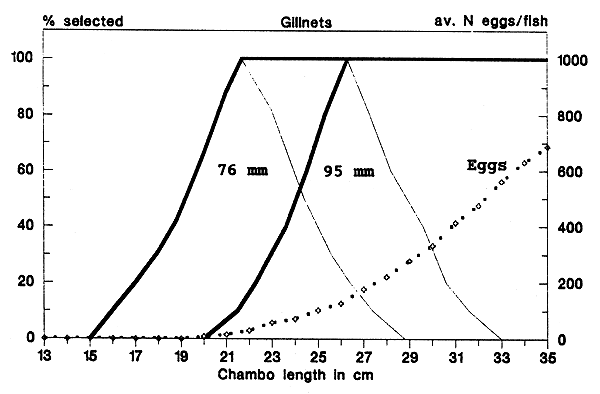
Figure 10.7 Lake malombe. Beach prices, 1991.
a. Chambo

b. Kambuzi

Figure 10.8 Earnings composition of nkacha nets.
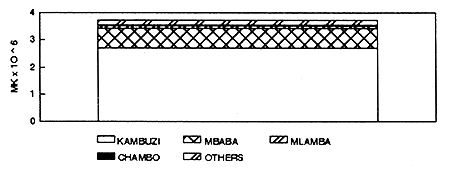
Figure 10.9 Seasonal change in earnings composition of nkacha nets.

Cost and earning studies, throughout all sectors of the fishery, are essential for any management plan. These where carried out in the project area from January 1991 to December 1991. The results permit an assessment of the present economic status of the fisheries and a profitability comparison between the different types of fishing economic units. They also provide a basis for prediction of the impact of new management measures upon the economic performance of the fishing businesses. In this context, they were incorporated into several bio-economic models (see sections 10.2 and 10.6).
Earnings are defined here as the value of the catch. Catch and price data were collected through the MTF system (see section 6.3). The data are stored and initially processed in a database and can be transferred to spreadsheet programmes for more detailed analysis.
Data on variable costs of fishing (crew share, miscellaneous costs) were collected through the same survey. The MTF database does not provide facilities for storing, processing and analysis of cost data. Therefore, the cost information was stored and analysed separately using Lotus 1-2-3. Costs of net maintenance, although variable, could not be collected on a single-fishing-day basis and were therefore assessed for a sub-sample. Information on investment costs was obtained from a baseline survey on fisherman-entrepreneurs (see above).
The chambo stocks in Lake Malombe have suffered a major collapse. The price of chambo almost doubled (compared with expected price increase due to inflation), whereas the kambuzi beach price increased only according to the inflation rate (Figure 10.7 a,b) (for detailed price information and beach prices of other species see Field Doc. 16).
The artisanal fisheries of Lake Malombe contribute 60% (MK 6 million) to the overall economic output of the three water bodies in the project area. The main “income earner” in the past, chambo, has lost its importance and has been replaced by a variety of small food fish, commonly known as kambuzi (Tab. 10.6).
Costs from all fisheries combined do not reach MK 2 million, which leaves a profit of more than MK 4 million for the fisherman-entrepreneurs.
Table 10.6 Contribution of the different types of fish to the overall economic output of Lake Malombe
| Species | Catch value (MK*1000) | |
| Kambuzi | 3250 | |
| Chambo | 950 | |
| Mbaba | 940 | |
| Mlamba | 330 | |
| Tilapia apart from Chambo | 220 | |
| Nchila | 180 | |
| Kampango | 10 | |
| Usipa | 5 | |
| Mpasa | 1 | |
| Sanjika | 1 | |
| Utaka | 0.5 | |
| Others | 110 | |
| Total earnings | 6081 | |
| Total costs | 1771 | |
| Total profit | 4310 | |
Note: Netting material is not included
The nkacha fishery is the most important fishery in Lake Malombe, in terms of people employed and economic output (Tab. 10.5).
Table 10.7: Contribution of the different fisheries to Lake Malombe's total economic output
| Gear | Proportion of contribution |
| Nkacha net fishery | 62.0 % |
| Gillnet fishery | 21.5 % |
| Kambuzi seine fishery | 15.0 % |
| Chambo seine fishery | 1.5 % |
a) Nkacha net fishery
The nkacha fishery in Lake Malombe is one of the most economically successful fisheries in the whole project area. Kambuzi are the main source of income for the nkacha fishermen (Figure 10.8).
Nkacha net fishermen are very active throughout the year. It was found that they even fish during the closed season (January - March) on a high activity level. Months with the highest earnings are April, July and August (Figure 10.9). During this time, fishermen go out fishing up to 25 days per month and they make up to 20 pulls per fishing day. The catch per pull is higher than in other months of the year (up to 23 kg of fish).
Figure 10.10 Earnings composition of kambuzi seine nets.
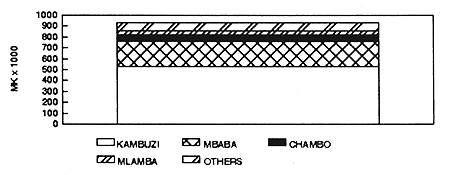
Figure 10.11 Seasonal change in earnings composition of kambuzi seine nets.

Figure 10.12 Earnings composition of gillnets.
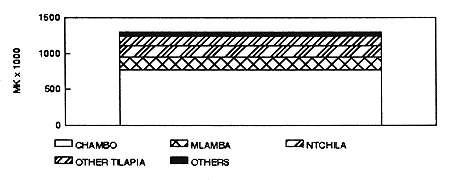
Figure 10.13 Seasonal change in earnings composition of gillnets.

Nkacha fisherman-entrepreneurs in Lake Malombe seem to use two major sharing systems, namely FE: crew = 2:1 in MS 1.1 and = 3:1 in MS 1.2. Other expenditures include warps, which have to be replaced almost every fishing day (MK 0.50/day) and food for the crew, which is provided by the fisherman-entrepreneurs (MK 1.5/day). The nkacha fishery is not only successful in terms of economic output: each nkacha fisherman-entrepreneur made a profit in 1991 that was considerably higher than the annual salary of a Fisheries Professional Officer in the Civil Service (MK 8,000 - MK 10,000) (Tab. 10.8).
b) Kambuzi seine net fishery
Like in the nkacha net fishery, small and large haplochromines (kambuzi and mbaba) are the most important sources of income in the kambuzi seine fishery (Figure 10.10). Chambo contributes 1.9% to the total catch of kambuzi seine nets and 6.7 % to the total earnings and becomes only important from October to December (Figure 10.11). Fishermen who operate kambuzi seine net units in Lake Malombe share the catch with the crew in a ratio of FE:crew = 2.1. Their daily expenditures include kerosene (MK 0.80/day), batteries (MK 1.5/day), warps (MK 4.5/day), firewood (MK 2/day), pressure lamp mantle (MK 0.5/day) and sometimes food for the crew (MK 4.5/day). For the individual entrepreneur the kambuzi seine fishery is less profitable than the nkacha fishery (Tab 10.8).
c) Gillnet fishery
Chambo contributes 40% to the total gillnet catch, but to more than 50% of the overall earnings of gillnet fishermen (Figure 10.12). Mlamba, nchila and other tilapiine species also contribute significantly, especially in times of low or irregular chambo catches (Figure 10.13). Gillnet fishermen in Lake Malombe are permitted to fish throughout the year. The activity level is generally high and stable, excluding months with low chambo catches. The overall CPUE is extremely high in MS 1.2, with catches of up to 70kg/100m net, whereas in MS 1.1 the mean CPUE is 6kg. The gillnet fishery is less profitable for the fishermen than the other fisheries of Lake Malombe, but still successful enough to keep the people involved in business (Tab. 10.8).
d) Cost and earnings in the chambo seine fishery
The chambo seine fishery is unimportant considering the small number of people involved and its relatively minor contribution to Lake Malombe's overall production. Only 100 fishermen (FE + crew) are still involved in this kind of fishing. Chambo and other tilapiine species, which fetch a high price on the market, constitute the economically most important part of the chambo seine fishermen's catches. Although rather inactive with 100 fishing days per year, the chambo seine owners are the second most economically successful fishermen in Lake Malombe (Table 10.8).
Table 10.8: Lake Malombe. Costs and earnings in the nkacha, kambuzi, gillnet and chambo seine fisheries in 1991 (in MK * 1000).
| NK | KS | GN | CS | |
| Total produce | 3774 | 913 | 1309 | 85 |
| Total costs | 1018 | 318 | 39 | 36 |
| Total income | 2756 | 595 | 911 | 49 |
| Income/owner | 15 | 11 | 8 | 12 |
| No. of nets | 186 | 56 | 115 | 4 |
| No. fishing days/year | 200 | 204 | 168 | 110 |
Note: All fishing units are fully depreciated. Costs for net maintenance were not taken into account in the calculation above. It is estimated, that each net requires netting material for about MK 1000 per year.
It is necessary to consider a range of management options with a view to optimising socio-economic conditions and maintaining the levels of fish production. These options must take into account the practical implications and incorporate any predictions that may be available. The following scenarios have been considered:
There is effectively no management action and the fishery is allowed to continue with the poorly enforced regulations that are currently in place. Fishing effort is not assumed to increase further.
Management actions are focused on the restoration of the chambo stocks but with the maintenance of fishing with gillnets and chambo seines. All gear that is not selective for the larger sizes of chambo, i.e. kambuzi and nkacha seines, will be banned. The current effort of the gears targeted on chambo will be maintained.
Management actions are focused on the restoration of the chambo stocks as in B above. However, in order to compensate the owners of banned gear, additional gillnets will be allowed to enter the fishery.
Management aims to allow the recovery of the chambo stocks while maintaining and protecting a kambuzi fishery. The use of both nkacha and kambuzi nets continues to be allowed but with the mesh size regulated to a minimum of 25mm. This mesh size will be selective for larger sizes of fish.
As in D, the management option will allow the recovery of the chambo stocks and maintain and protect the kambuzi fishery. Kambuzi seines will be completely banned and the owners of the banned gear will be compensated by allowing them to convert to nkacha nets.
A model for the chambo fisheries was developed to project the likely outcome of these management scenarios over the next 10 years. The model is briefly explained below, (details are given in Van Zalinge et al., 1992).
As a result of length-frequency sampling of the chambo catches from all the gears throughout a full year, and using length-based and age-based methods to determine growth, it has been possible to present in Table 10.9 the total catch of chambo made from Lake Malombe broken down in numbers by age-group and gear. These data form the basis for the virtual population (VPA) or cohort analysis as already explained in section 7.3. Having numbers per age-group, the structure of the original population from which these catches were taken can be reconstituted and the fishing mortality rates necessary to produce them calculated, see Table 10.9. However, since sampling has been carried out for only one year, we are dealing here with a series of age-groups that have been recruited in different years. Thus the six-year old chambo was recruited in 1985, the five year old in 1986, etc. The size of the recruitment for each of these age-groups must have been different and each age-group has been subjected to a different fishing regime during its life-span. In fact this is a so-called “pseudo”-cohort.
Sensitivity analysis shows that over-estimates of the natural mortality always induce an under-estimate of the fishing mortalities, at all ages, and would result in a more pessimistic prediction than would under-estimates of the natural mortality. An error in the terminal fishing mortality has an effect on all other fishing mortalities, but this effect becomes smaller with decreasing age. The choice of the natural mortality and terminal fishing mortality values is explained in section 7.2. Using the ANACO programme (Mesnil, 1989) that allowed for the adjustment for past variations in fishing regime and recruitment, indices of the probable variations in these two parameters were calculated using effort data for all gears, compared with the CPUE of the gillnet fishery in the previous year.
Table 10.9 Results of cohort analysis (Anaco) using the Lake Malombe catches in table 10.5, taking into account past variations in recruitment and effort, the natural mortality rate for age 1 = .4, age 2 = .3, age 3 and over = .2, terminal fishing mortality rate = 1.0
| Age | Population size in number (X1000) at start of the year | Fishing mortality rate (all gears) | |
| 0 | 5760 | = recruitment | .62 |
| 1 | 2070 | .25 | |
| 2 | 1210 | 1.00 | |
| 3 | 512 | .98 | |
| 4 | 195 | 1.49 | |
| 5 | 36 | 1.50 | |
| 6 | 5 | 1.00 | |
Table 10.10 Lake Malombe. Inputs for model predicting future chambo catches (based on 1990/91 data).
| Age | Average weight (gr) | Average beach price (MK/KG | Average number of eggs produced per fish* |
| 0 | 17 | .81 | 0 |
| 1 | 65 | .92 | 0 |
| 2 | 242 | 2.18 | 75 |
| 3 | 413 | 2.18 | 255 |
| 4 | 575 | 2.18 | 478 |
| 5 | 749 | 2.18 | 686 |
| 6 | 884 | 2.18 | 830 |
* % of spawners × average fecundity
Estimates have been made of the number of chambo in each age-group and the mortality caused by each of the gears. It is possible to calculate what happens, when a certain gear is banned and the mortality caused by that gear drops to zero, and thereby reducing the overall fishing mortality if the remaining gears do not increase their effort. A lower fishing mortality means that less chambo will be caught and that more will survive to spawn.
It has been assumed that for chambo there is a direct relationship between the size of the parent stock and the recruitment to the fishery, at least at these low stock levels. At levels around MSY this relationship may not hold good, due to environmental constraints. As 2-year old fish produce much fewer eggs than do older fish, (see Table 10.10), and less of them spawn, the precision of the model was increased by including estimates of egg production by the parent stock, rather than the size of the parent stock itself.
Figure 10.5 and Table 10.11 Lake Malombe. Predicted development of the chambo catch in different management scenarios starting in 1993. Only the optimistic model of juvenile chambo recruitment has been used. Effort is assumed to be constant, except as indicated below.

| Scenario | A | B | C | D | E |
| Year | catch(t) | catch(t) | catch(t) | catch(t) | catch(t) |
| 1992 | 525 | 525 | 525 | 525 | 525 |
| -------------------------------------------Implementation management plan------------------------------------------- | |||||
| 1993 | 482 | 271 | 367 | 358 | 334 |
| 1994 | 448 | 370 | 413 | 428 | 417 |
| 1995 | 430 | 697 | 807 | 575 | 601 |
| 1996 | 397 | 982 | 1027 | 704 | 763 |
| 1997 | 366 | 1190 | 1023 | 799 | 892 |
| 1998 | 340 | 1622 | 1315 | 939 | 1089 |
| 1999 | 319 | 2494 | 1944 | 1172 | 1428 |
| 2000 | 297 | 3566 | 2392 | 1434 | 1823 |
| 2001 | 276 | 4742 | 2741 | 1693 | 2230 |
| 2002 | 256 | 6533 | 3563 | 2009 | 2754 |
If, therefore, in the model the parent stock increases relative to the previous year, recruitment in the following year is increased proportionally, and vice versa. 1
Management options proposed include mesh size increases. When a mesh size is increased, initially less fish will be caught. Net-selection ogives for the gillnet, chambo, kambuzi and nkacha seines indicate what the effect of increasing the mesh size will be on the fishing mortality rate (Figures 10.2 and 10.6).
A number of scenarios have been modelled (Figure 10.15 and Table 10.11). In each of these scenarios 1992 represents the present situation while the changes that are to be tested come into effect in 1993.
It should be noted that if all fishing is banned completely and the fishing mortality reduced to zero, after 6 to 8 years the chambo stock would be sufficient to support a catch of about 4,000 tonnes.
The model was also tested in a reversal of the present situation. When simulating the decline in a fishery yielding about 4,000 tonnes a year, given the present fishing regime, a collapse occurred 1.5 times slower than actually happened. This suggests that fishing mortality rates may have been higher in the past, particularly for adult chambo. This inference is supported by the nearly 40% reduction in gillnet units that has occurred between 1985 and 1991 (frame survey data).
There are several problems of reliability of data in the development of these models. When sampling the kambuzi and nkacha seines to find out how much kasawala is caught by them, kasawala is often completely mixed in with the kambuzi. Moreover, in the closed season few samples were obtained, although most gears were operating and catching kasawala. It is obvious therefore that there must have been an under-estimation in the numbers of kasawala caught by these gears, and consequently an under-estimation of the size of the recruitment in the cohort analysis. To compensate for this the estimate of the total catches of kasawala made by these gears has been doubled. This is probably an overestimate of the real catch. The reality will be somewhere in between. In the scenarios, both an under-estimate of the real recruitment and an over-estimate have been used. The social and economic implications are based on the optimistic model of kasawala recruitment.
All socio-economic models have been calculated on the basis of 1991 mean beach prices. A sharing system between the gear owner and the crew of either 2:1 (nkacha net/kambuzi seine net and gillnet fishery) or 1:1 (chambo seine net fishery) is assumed.
The first scenario explored was “doing nothing” and leaving the current situation as it is: see Figure 10.15 and Table 10.11. The assumption made for this scenario was that no more gears of any kind would enter the fishery. With no further increase in effort, the decline in the chambo catches would still continue. The predicted outcome is clear: the chambo stocks do not recover at all in this scenario, even considering a doubling of the kasawala catch, and a recruitment increased by 60%. (This is not shown in Figure 10.15, nor in Table 10.11). The present fisheries simply exert too great a pressure on the stocks for a recovery to occur, even in the long-term.
Chambo hardly contributes to the overall earnings of the kambuzi and nkacha seine net fishery (Table 10.12). Consequently, these fisheries will not be affected seriously by any further chambo catch decline. Both fisheries remain profitable, assuming that the kambuzi stocks will not collapse in future.
Figure 10.16 Scenario A: economic impact on the gillnet fishermen.
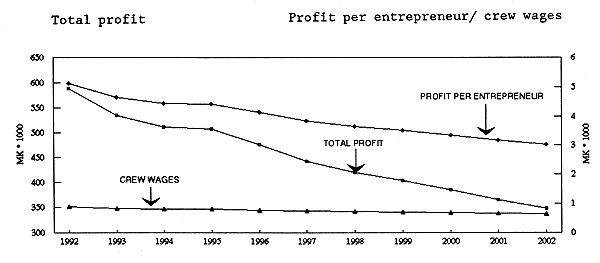
Figure 10.17 Scenario A: economic impact on the chambo seine fishermen
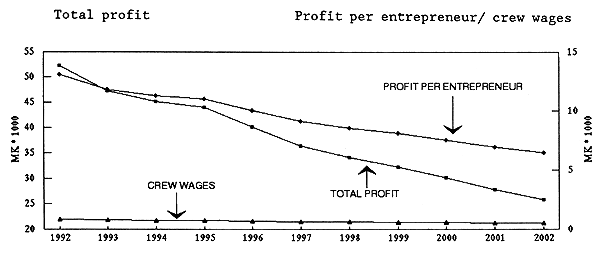
Table 10.12 Scenario A. Economic impact on the kambuzi seines and nkacha net fishery (in MK * 1000).
| Year | total value/chambo | value/others | profit/value/all | wages/profit | owner | crew member |
| 1992 | 172.3 | 4591.7 | 4764.0 | 2431.8 | 8.0 | 0.7 |
| 1997 | 119.8 | 4591.7 | 4711.5 | 2396.8 | 7.9 | 0.6 |
| 2002 | 75.3 | 4591.7 | 4674.8 | 2372.8 | 7.8 | 0.6 |
In 10 years the gillnet fishery is expected to contribute at least 30% less to the Malawian economy than now. The fishery will remain profitable, but each gillnet fisherman will make 40% less money than at present (Figure 10.16).
Without the implementation of new management measures to protect the chambo stock, the chambo seine fishery will suffer most. As explained above, chambo is the main source of income in this fishery. A further catch decline will result in a loss of 50% of the entrepreneur's profit (Figure 10.17). With a sharing system of 1:1 the fishery will remain profitable, but entrepreneurs will face difficulties in recruiting crew members. An increase in crew share will further reduce the entrepreneur's profit.
This scenario considers the most drastic measures that can be taken to restore the chambo stocks without closing down all fisheries throughout the lake. The kambuzi and nkacha seines are banned completely and the legal minimum mesh size of both gillnets and chambo seines is raised to 95mm.
The model predicts that the chambo stocks would recover slowly. It is likely to take about 5 – 7 2 years for the annual catches to exceed 1,000 tonnes for the first time. It would take 10+ years for the fishery to reach MSY.
A ban on nkacha nets and kambuzi seine nets would result in a loss of income for ca 3,000 people, including fish traders. Considering their families, about 15,000 people would thus be affected. The loss of fish now caught by these nets would not be compensated for before the year 2002 and the loss of economic output not replaced before 1998. The profit of chambo seine and gillnet fishermen is expected to increase quickly. Thus, the economic potential of Lake Malombe would be utilized by only a small number of fishermen.
In Scenario C, some recompense is provided to the banned kambuzi
and nkacha seine owners and in exchange for discarding the banned
gear they are each allowed to acquire 100 m of 95mm gillnet each.
Under these conditions, the chambo stocks would recover more
slowly, and are estimated to yield more than 1,000 tonnes only
after about 7 – 10 years. Permitting the kambuzi and nkacha owners
to acquire more gillnets would delay the recovery of the chambo
stocks even more.
It is important to realise that in Scenarios B and C the kambuzi
stocks would remain largely un-exploited and that the total fish
production from Lake Malombe would drop dramatically.
The option to replace kambuzi seine nets and nkacha nets by a 100m gillnet must be primarily considered from the social point of view, as economically it appears to be a disaster (Table 10.13). The gillnet owners as well as the crew members would immediately lose 50% of their income. Furthermore, they would not regain the present profit level before 1995. The newcomers to the gillnet fishery would reach profitability after 1995, but owners' and crews' income would remain marginal until 2002.
There would be an immediate 50% fall in the profit of chambo seine fishermen, but recovery would be rapid. By 1995 they would make more money than at present.
Table 10.13 Scenario C. Economic impact on the gillnet fishery, (in MK * 1000)
| a) | present gillnet fishermen | ||||
| year | total catch value | profit/ | wages/ | ||
| profit | owner/year | crew member/ | |||
| 1993 | 774.3 | 285.3 | 2.5 | 0.6 | |
| 1994 | 831.0 | 323.1 | 2.8 | 0.6 | |
| 1995 | 1319.5 | 648.7 | 5.6 | 1.0 | |
| 1996 | 1597.9 | 834.3 | 7.3 | 1.2 | |
| 2002 | 4730.3 | 2922.6 | 25.4 | 3.4 | |
| b) | newcomers | ||||
| year | total catch value | profit/ | wages/ | ||
| profit | owner/year | crew member/ | |||
| 1993 | 495.1 | - 53.6 | - 0.2 | 0.1 | |
| 1994 | 531.3 | - 29.5 | - 0.1 | 0.1 | |
| 1995 | 843.6 | 178.7 | 0.6 | 0.2 | |
| 1996 | 1021.7 | 297.4 | 1.0 | 0.3 | |
| 2002 | 3024.4 | 1632.6 | 5.4 | 0.8 | |
Figure 10.18 Scenario E: economic impact on nkacha net fishermen.
| a. Catch value | b. Profit per fisherman-entrepreneur |
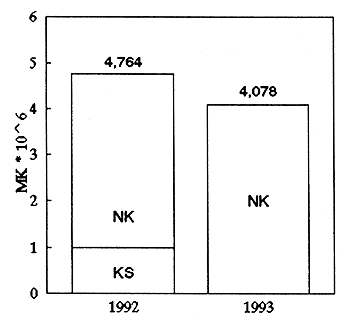 | 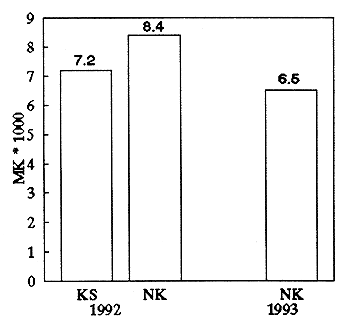 |
| c. Employment | |
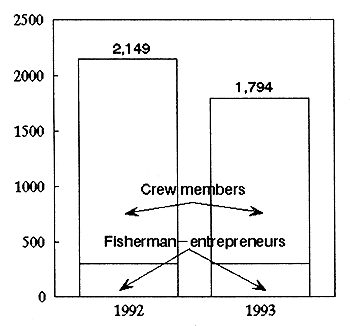 | |
In Scenario D the kambuzi and nkacha seines are not banned, but the minimum mesh size is increased to 25mm (see Section 10.1.3). Current investigations suggest that this mesh size would still allow the continued exploitation of the presently dominant kambuzi species, although initially there would be a drop in their total catch. An important benefit would be a substantial drop in the rate kasawala are killed by these seines (65% drop for 0-year, 40% for 1-year old fish).
In this prediction scenario it would take 7 – 10 years for the chambo yields to reach 1,000 tonnes.
In Scenario E the mesh size restrictions remain and only the kambuzi seines are banned. This would considerably reduce the catch of undersized kambuzi and the damage that is currently being inflicted on the lake-edge environment, a habitat which plays a very important role as a breeding and nursery area for chambo as well as for all shallow water haplochromines.
If the kambuzi seines are banned and the owners are allowed to change their nets to nkacha seines, it is estimated that it would take 6 – 9 years for the chambo yields to reach 1,000 tonnes.
In the short-term, as a result of a mesh size increase to 25mm, nkacha net catches would fall slightly (Figure 10.18a and b). The nkacha fishery is profitable enough to withstand such a catch decline. A sudden drop in economic output and profit would be compensated in a short time by an increased catch rate. At present this cannot be predicted with any degree of accuracy. A replacement of the present kambuzi seine nets by nkacha nets would result in a loss of employment for a few hundred crew people, because nkacha crews are usually smaller than those of kambuzi seine nets (Figure 10.18c). Balancing immediate and long-term and social considerations, the loss of employment may be acceptable.
Both, the chambo seine and the gillnet fishery would benefit quickly from a ban on kambuzi seine nets and a mesh size increase for the nkacha nets. The total catch value of both fisheries is expected to increase from approximately MK 1.2 million to MK 5.5 million by 2002. The gear owners would have doubled their annual profit.
In assessing the options available the management strategy modelled in scenario E is recommended, as:
All fisherman-entrepreneurs stay in business, though they may experience temporarily lowered profits.
Most crew members remain in employment and the catch and value falls insignificantly.
It provides improved habitat protection.
There is a chance of a recovery of the chambo stock, without losing the fishery for kambuzi.
It will prevent recruitment overfishing of the kambuzi stocks.
As fishing effort is proportional to the overall size of the individual fishing gears, and one of the major management objectives is to regulate the fishing effort, it is necessary to specify the size of gears that may be used. For most gears, size is specified in the fisheries legislation. Nkacha seines are not included and it is proposed that the headline length of each nkacha net unit be limited to 150m. The majority of the nkacha seines currently in use do not exceed this length.
A closed season is usually introduced, either to protect spawning fish and/or the juveniles, or to lower fishing effort. As explained in section 4.4.4, the chambo species have a rather extended spawning season. Closing the fishery in Lake Malombe from January to March seems therefore a rather arbitrary decision. Since, in practice, the closed season is hardly enforced, nor easily enforceable, it has been ineffective. The tacit acceptance of this flouting of the regulations damages the image and the authority of the Department of Fisheries. It was estimated in section 5.3, that most gears continue working throughout the closed season. Under the present circumstances, abolishing the closed season will therefore have little effect on the effort expenditure on a annual basis.
An additional, and socially important, consideration is that the Malombe closed season occurs at a time of general food shortages and hardship for the local population. A real closure of the fishery would aggravate these problems.
We therefore propose to abolish the closed season and suggest this could be used in the extension messages to show that the Department of Fisheries gives something in return for the demands that will be made in the future.
Adoption of the principle of limiting access to Malawi's fisheries and implementing it for Lake Malombe (and the Upper Shire river and south-east arm of Lake Malawi), as soon as possible.
Existing fisherman-entrepreneurs should not be allowed to increase the total lake-wide number and size of the present gear holdings.
Uniformly raising the gillnet and chambo beach-seine minimum mesh size to 95mm throughout Lake Malombe (and the Upper Shire river and Lake Malawi).
Banning the use of fine-meshed beach-seines, such as kambuzi/chalira seines in Lake Malombe (and in the Upper Shire river and Lake Malawi).
Introducing a minimum mesh size of 25mm and a maximum headline length of 150m for nkacha seines and classing this gear as an open-water seine under Malawi's fishery laws.
Lifting the annual ban in Lake Malombe on nkacha seine operations during January to March and on chambo seine operations in November and December.
Monitoring of the developments in Malombe's fisheries with particular emphasis on the nkacha fishery.